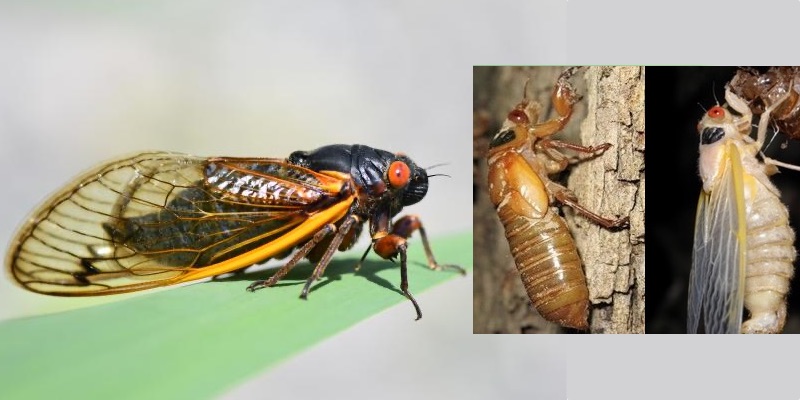 cicada brood x expected to return in May 2021. Picture: cicada mania
cicada brood x expected to return in May 2021. Picture: cicada maniaWhile the rest of the world is battling biblical locust plagues, Brood X will unleash billions of cicadas in the US in 2021.
Are you ready for these billions of big, incredibly loud cicadas?
What is Brood X?
Cicadas emerge from the ground in the eastern United States every year.
And once every 17 years, a truly out-of-this-world phenomenon called “Brood X” takes place bringing “a massive brood of cicadas in the mid-Atlantic and Midwest, filling the air with a deafening mating hum that can reach up to 100 decibels.“
Also known as the “Great Eastern Brood,” this insect infestation is set to return in May 2021 for about a month or so.
Brood X (‘x’ meaning 10) is the name for the big generation of cicadas due in the spring of 2021, just as in 2004 and 1987.
The coming Brood 10 is the most widespread and prolific of the known generations. Through history, it has appeared as far west as Missouri, as far south as Georgia, as far north as Michigan and as far east as Long Island, New York.
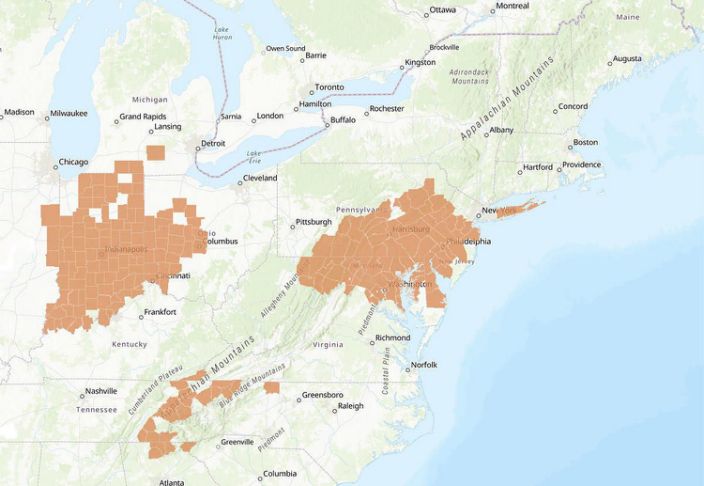
Brood X is endemic to much of Indiana, Pennsylvania, Maryland, New Jersey, Delaware and Eastern Tennessee. Map by USDA Forest Service
Why is Brood X showing up once every 17 years?
Why do cicadas only show up in 17-year cycles when most insects make annual apearances?
Scientific studies on cicadas have shown that if the temperature lingers too long below 68 degrees, it gets too cold for cicadas to mate and survive.
Then to survive cold summers, they stay underground. Moreover, the less often cicadas emerge from the earth, the lower their odds of being wiped out by an unusually cold summer.
So why only every 17 years?
It is unknown… , but scientists have a few theories:
- The unusual, prime-numbered lifecycle prevents generations of cicadas from run-ins with the lifecycles of wasps that prey on them.
- Prime-numbered cycle reduce the likelihood that 17-year cicadas will mate and hybridize with cicadas of different species or generations.
Why are there so many cicadas?
It’s because of predation! Once a cicada emerges above ground, it faces no shortage of predators (birds, reptiles, fish, spiders, wasps and even household pets).
Cicadas are also big, slow and don’t fly especially well. So the only defense cicadas have against extinction is their sheer numbers.
What should you do to prepare for the swarm?
There will be billions of them! So let’s be honest, you will not avoid them!
The good news are that cicadas won’t decimate crops like locusts do, aren’t poisonous and don’t spread disease. And if you are adventurous enous, cicadas are a good source of proteins.
Cicada danger for trees
However, cicadas can be a threat for young trees. So don’t plant any fruit trees around your house next spring “because these trees are going to simply get hammered next year when those cicadas show up,” said University of Maryland entomologist Mike Raupp.
If you’ve recently planted a tree, like in 2020, it’s not too late to save it from the coming swarm. Cover your young trees with fine netting net sizes (<1cm) by the middle or end of April. This will keep the cicadas from laying their eggs in the branches.
How long does cicada Brood X last?
Brood X will die-off after mating and laying eggs in the branches of trees. The cicadas that hatch in 2021 will drop to the ground and burrow into the earth for 17 years. There, they’ll feed on the fluids in tree roots until they emerge to breed in May 2038.
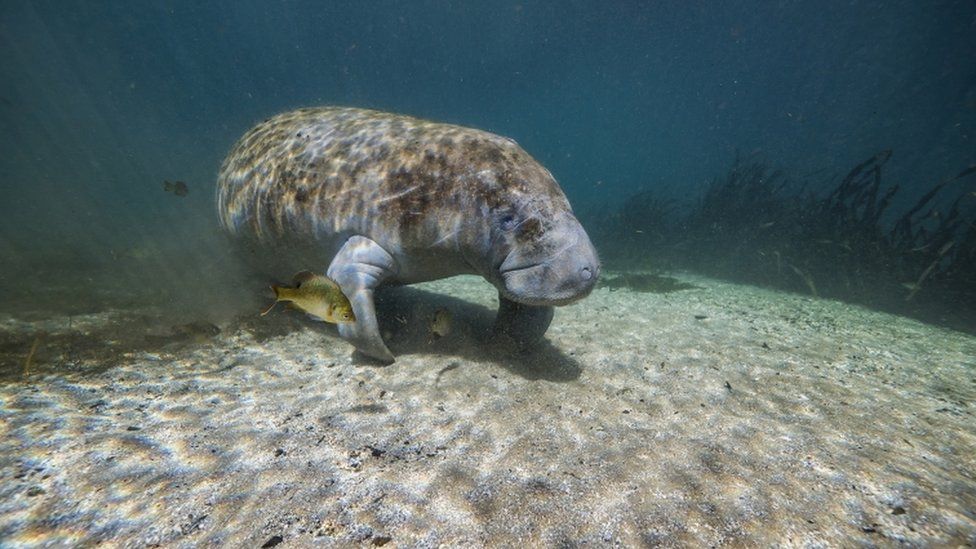
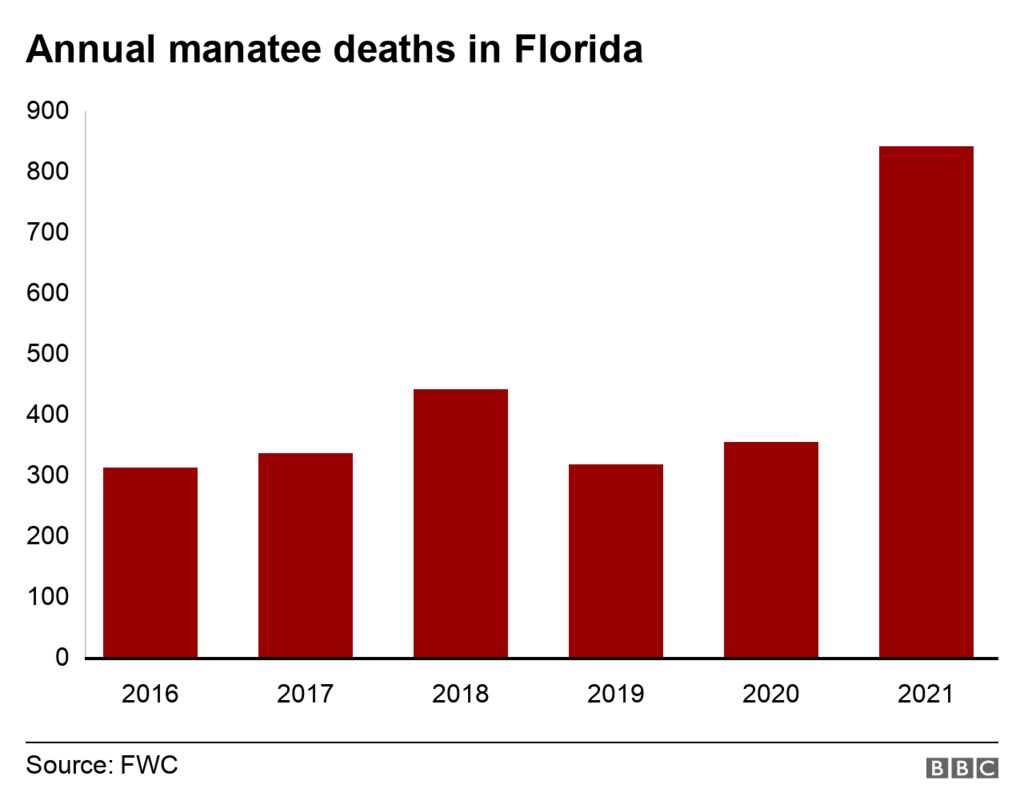
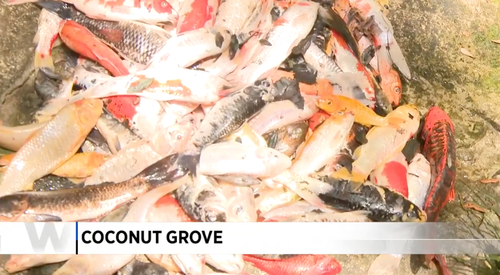
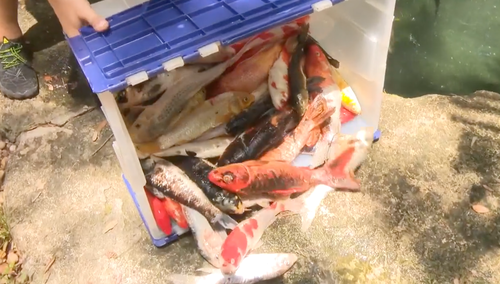
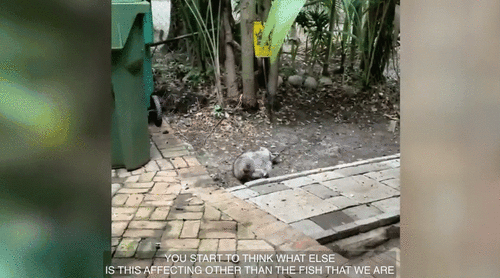
You need to be a member of Earth Changes and the Pole Shift to add comments!
Join Earth Changes and the Pole Shift